Consolidation and practice
These resources are to support children in guided or independent work. Roll over the highlighted resources for a description.
Coordinates
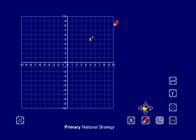
This interactive teaching program (ITP) is an ICT-based tool to support the exploration of coordinates. Coordinates ITP allows the child or teacher to use a marker to identify the coordinates of points on different grids, mark points and draw lines and shapes, working in one, two or four quadrants to introduce both positive and negative coordinates. The ITP can also be used to explore the properties of 2-D shapes and to predict translations, rotations and reflections of various shapes in the different quadrants.
Polygon
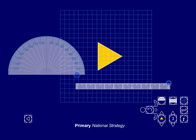
This interactive teaching program (ITP) is an ICT-based tool to support the exploration of shape, space and measure. Polygon ITP allows the child or teacher to represent regular polygons with three to ten sides. The ITP can then be used to explore the properties of regular and irregular shapes by dragging vertices and creating additional vertices. The ITP includes an on-screen protractor and ruler.
Fixing points
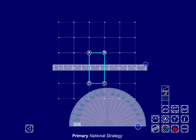
This interactive teaching program (ITP) is an ICT-based tool to support the exploration of shape and space. Fixing points ITP allows the child or teacher to create one or more shapes by connecting a number of vertices on a grid. Angles can be estimated and measured, and the effect of moving different vertices can be explored.
Isometric grid
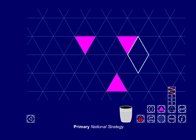
This interactive teaching program (ITP) is an ICT-based tool to support the exploration of shape and space. Isometric grid ITP allows the child or teacher to display equilateral triangles. The grid can be hidden or become an isometric pin board. An 'elastic band' can be stretched around the pins to create outlines. Rhombuses can be selected and dragged to different positions on the grid, and then locked together to form representations of 3-D shapes.
Opportunities to use and apply
Possible contexts include:
- Art, e.g. Look at pictures by Mondrian and identify parallel and perpendicular lines. Create Mondrian-style pictures given particular criteria.
- Design technology, e.g. Consider strategies to ensure that adjacent struts in a wooden box frame remain perpendicular.
- Everyday objects, e.g. Identify parallel and perpendicular lines in everyday objects, e.g. gates, flags.
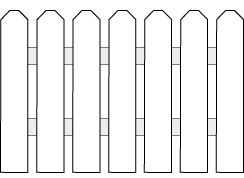
- Sorting activities, e.g. classify shapes onto Venn, Carroll and tree diagrams using properties such as has at least one pair of parallel sides/faces.
- Coordinates, e.g. Draw the straight line between points (1,1) and (6,6). Draw a line perpendicular to this that goes through the point (1,6).
Confirming learning
Ask probing questions such as:
- Give a time when a clock's minute and hour hands are perpendicular.
- Investigate which of these quadrilaterals have diagonals which are perpendicular to each other: square, oblong, kite, parallelogram.
- Name a 3-D shape that has: only one pair of parallel faces; three pairs of parallel faces; no pairs of parallel faces.
- Draw a quadrilateral where all touching sides are perpendicular. What is the relationship between opposite sides?
- Points a, b and c are three of the vertices of a quadrilateral. Give the coordinates of the fourth vertex, if the quadrilateral has: only one pair of parallel sides; two pairs of parallel and perpendicular sides; only one pair of perpendicular sides.
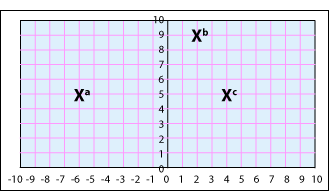
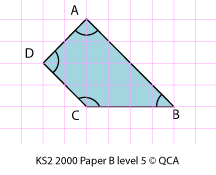
 ) if it is true.
) if it is true. ) if it is not true.
) if it is not true. Understanding shape
Understanding shape





